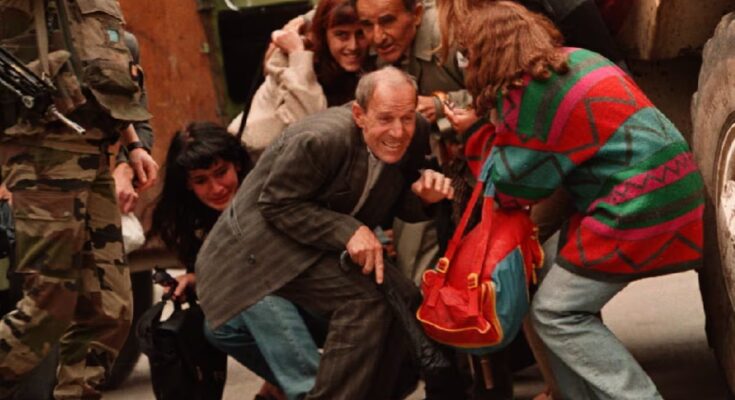The Milan Prosecutor’s Office has opened an investigation into a chilling case reminiscent of the infamous Sniper Alley in Sarajevo, the city besieged from 1992 to 1996 by Bosnian Serb militias during the Bosnian War. From the surrounding hills they shot passers-by who had no choice but to cross that road and risk being killed. It is estimated that more than 11,000 civilians were murdered in this way.
The investigation, revealed by the Italian media, concerns an alleged crime of voluntary homicide aggravated by cruelty and vile motives. His central thesis is that some Italians paid to go to Sarajevo at the weekend and shoot people, as if it were a hunting trip.
Ordinary citizens, linked to far-right circles and gun enthusiasts, would have taken on this service as a sort of human safari in the besieged city. According to the complaint, the passengers were flying from Trieste to Belgrade with the Serbian airline Aviogenex, which was operating from the Italian airport at the time. According to the initial hypotheses of the investigation, to be weekend snipers they would have paid the equivalent of between 80,000 euros (92,800 dollars) and 100,000 euros (116,000 dollars). Shooting children costs more. The news that has emerged speaks of a Milanese entrepreneur who owns a private cosmetic surgery clinic, as well as citizens of Turin and Trieste.
The complaint, documented in 17 pages, was filed by the writer and journalist Ezio Gavazzeni, assisted by the esteemed former magistrate Guido Salvini and by Benjamina Karic, mayor of Sarajevo from 2021 to 2024, who gathered information on something that had been rumored for years and which came to light in 2023 in Safari in Sarajevoa documentary by Slovenian director Miran Zupanic. This film collected testimonies and offered clues about the possibility that wealthy foreigners paid to travel to the Bosnian city to personally shoot humans.
The Bosnian Prosecutor’s Office closed an investigation due to the difficulty of investigating such a case in a country still deeply divided and marked by war, Gavazzeni said The Republic on Tuesday. As for Serbian justice, he claims that for the courts of that country the issue is “an urban legend”. For this reason he tried to open the case in Italy. “We are talking about wealthy, famous people – businessmen – who during the siege of Sarajevo paid to kill unarmed civilians. They left Trieste on a manhunt and then returned to their respectable daily lives,” he said.
Prosecutor Alessandro Gobbis has a list of several people who can testify and who will be called to testify. According to the writer, these bloodthirsty war tourists could number around 100. “I hope they can spot at least one or two, maybe 10,” he said.
Among the witnesses, Gavazzeni specifies, there is an agent of the Bosnian secret service with the acronym ES, who was aware of the facts and claims that the Italian secret services – which had personnel in Sarajevo – received information about them in 1993 and that there may be confidential files on the subject. “He told me that Bosnian intelligence had warned of the presence of at least five Italians in the hills around Sarajevo, accompanied there to shoot civilians,” he said.
It also cites a Slovenian intelligence officer, some victims and a wounded firefighter who, during the trial of Serbian leader Slobodan Milosevic in The Hague, spoke of “tourist shooters” with distinctive clothes and weapons who stood out among Serbian soldiers.
The Bosnian consul in Milan, Dag Dumrukcic, guaranteed the “full collaboration” of his country’s government. “We are eager to find out the truth about such a cruel matter and settle accounts with the past. I am aware of some information that I will provide to the investigation,” he said.
In the past, the images of the Russian writer Eduard Limonov on the hills of Sarajevo, next to the Bosnian Serb leader Radovan Karadzic, were also well known and very controversial. In them they showed him how snipers shot people, and he himself took a machine gun and fired a few shots.
Sign up to our weekly newsletter to get more English-language news coverage from EL PAÍS USA Edition



